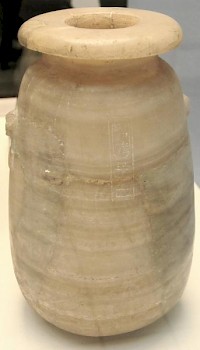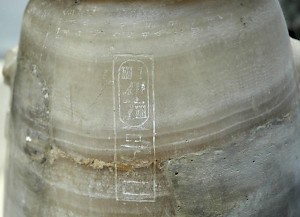A Jar with the Name of King Xerxes
A Jar with the Name of King Xerxes

In the British Museum in London, you can see this calcite jar (almost 30 centimeters high), which was discovered in the ruins of the Mausoleum of Halicarnassus, the monumental tomb of the satrap of Caria, Maussolus.
The object was probably made in Egypt and contains a very brief inscription in Old Persian that is also known from other vases:
Xšayâršâ XŠ vazraka
The great king Xerxes.
There are Egyptian, Babylonian, and Elamite translations too. This inscription is rather stereotypical and not extremely interesting, but the fact that Xerxes' jar was discovered in the Halicarnassian Mausoleum, is quite sensational.

It is well-known that the Achaemenid king Xerxes, who ruled the Persian empire between 486 and 465, tried to conquer Greece in 480. The Greek war is described in great detail by the Greek researcher Herodotus of Halicarnassus, who does not mention a visit by Xerxes to his native city. Yet, only the great king can have given this precious object with the almost sacrosanct royal signature to the ruler of Halicarnassus, queen Artemisia, who is also said to have been among the best commanders in the navy of Xerxes. The present must have passed through the Carian royal line and was eventually given as a funeral gift to Maussolus and his wife, who was also called Artemisia.
It is an intriguing thought that this little jar has been in the hands of king Xerxes, queen Artemisia, satrap Maussolus, and his wife Artemisia. It is also a fascinating object that illustrates the way in which the histories of Persia, Egypt, and Caria were once intertwined.